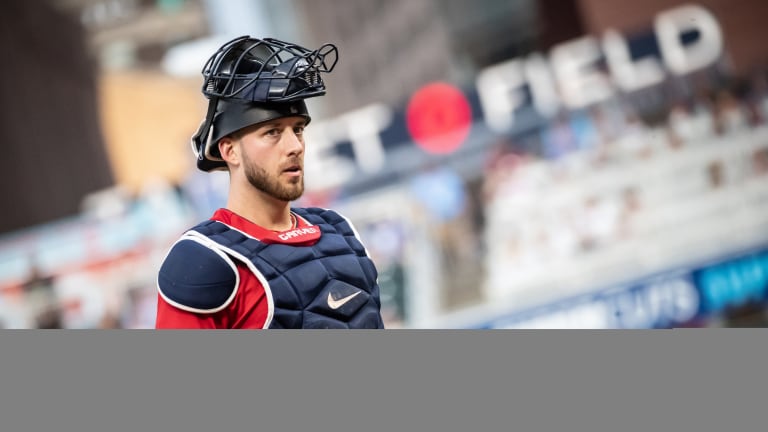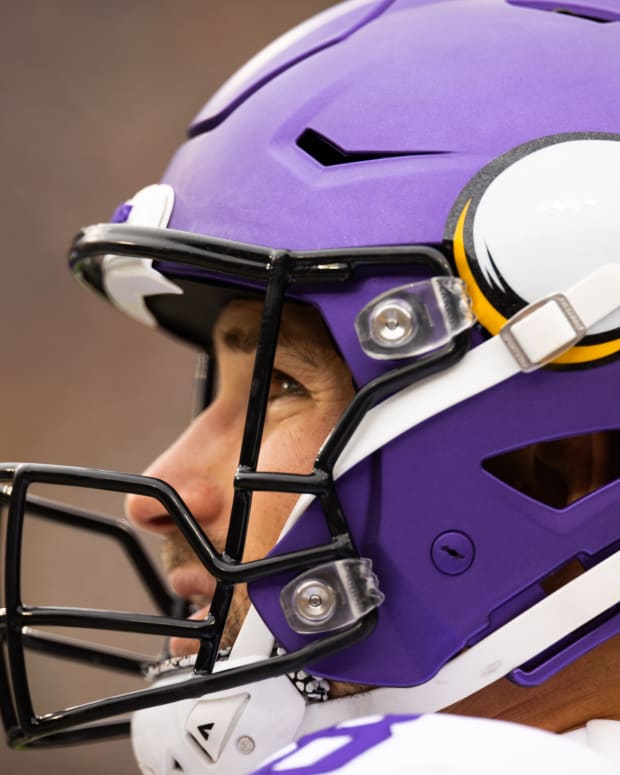
Twins Daily: Should the Twins consider moving Mitch Garver to 1B?

For a decade, the Twins had the best catcher in baseball. Then 2011 came and Joe Mauer was forced to move away from catching. Should the Twins consider protecting Mitch Garver from the risks that ultimately forced Mauer to switch positions?
During his first three seasons as a full-time first baseman, from 2014-16, Mauer went from an MVP-caliber player to an average hitter. Most of that was due to lingering issues caused by his previous injuries, especially the repeated concussions. A lot of people thought he was done.
Back in May of this year, Twins fans had a terrifying flashback of that situation, when Shohei Ohtani slid into home plate trying to score from second and hit Garver’s ankle on the base path. Garver went on to miss 16 games because of that play.
That was when many Twins fans started to think about the possibility of removing Garver from behind the plate. After all, he was hitting .329/.418/.747 (1.164) with a 198 wRC+. It’s obvious that Garver himself wants to keep catching, but should the Twins try to change his mind?
Increasing danger
MLB catchers are constantly at risk and some people argue that the league hasn’t done much to protect them. In 2015, a study showed that almost nine out of 10 times a catcher gets injured, it’s due to a foul ball or a bat to the head. There have been rule changes regarding home plate collisions, but that doesn’t seem to be working all that well. Just this year, some catchers have suffered hard hits at home, including this gruesome crash that nearly ended Jonathan Lucroy’s season.
We’re talking about human beings under constant danger and MLB should try to come up with a solution to protect all of them.
Other catchers to change positions
Hall of Famer Joe Torre gave up catching after the 1970 season at age 29 after 11 full seasons behind the plate. His productivity barely changed. He won his one and only MVP award in 1971 as a full-time third baseman.
Yogi Berra, another member of Cooperstown, also had a considerable drop in his playing time as a catcher. He averaged more than 572 plate appearances per season as a catcher between 1950 and 1957. From 1958 until the end of his career in 1965, he averaged only 199 plate appearances per season behind the plate. There are lots of other examples, which you can check here and here.
How and why the Twins could do it
Earlier this week, we discussed whether or not Minnesota should tender a contract to C.J. Cron. If they don’t, it’s hard to imagine a player that would be a better fit for first base. Some would argue that Miguel Sanó should be the first option, but then you would have to go after a replacement for him at third, like we discussed here.
Also, in this scenario, The Twins may not need to replace Jason Castro. Having the role of primary catcher available may increase the Twins chances of resigning Castro. You would have a very good catcher who is familiar with the organization and can contribute immensely to the team in every aspect.
This story originally appeared at Twins Daily and was re-shared through a collaboration with Bring Me The News.









